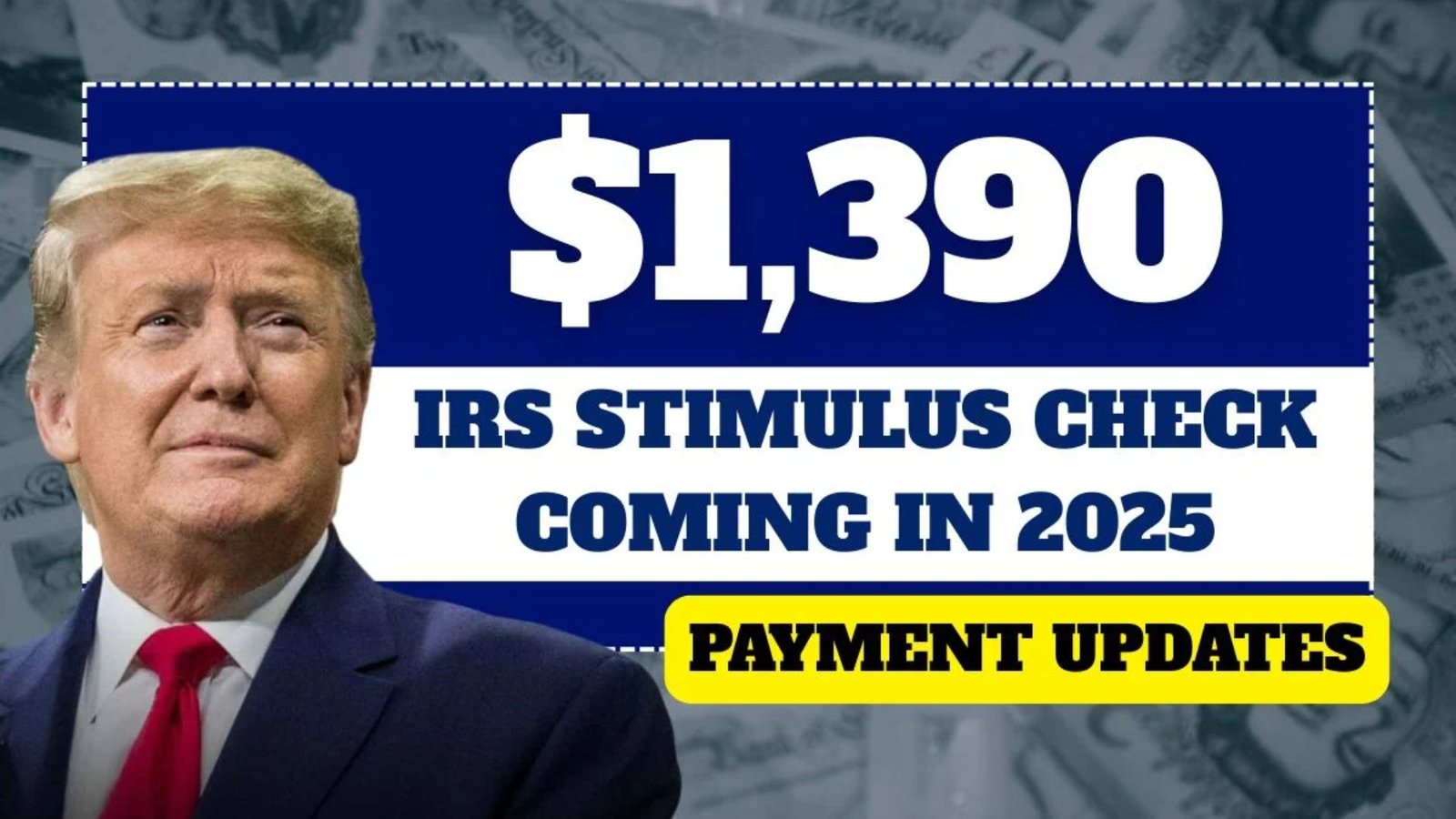Are you wondering if you’ll get a $1,390 stimulus check in 2025? With rising costs squeezing wallets, millions of Americans are eager for financial relief. This blog post dives into the details of the rumored stimulus payment, who qualifies, when it might arrive, and how to ensure you don’t miss out. Stick around to learn everything you need to know!
What Is the $1,390 Stimulus Check?
A new $1,390 stimulus check is reportedly set to roll out in mid-2025 to help Americans cope with inflation and rising living costs. This one-time, tax-free payment aims to support low- and middle-income households, Social Security recipients, and veterans. It’s part of a federal effort to ease financial strain for millions.
History of Stimulus Checks in the U.S.
Stimulus checks have been a lifeline during tough times. The U.S. government issued three rounds during the COVID-19 pandemic:
- 2020: Up to $1,200 per individual, plus $500 per child.
- Late 2020: $600 per person.
- 2021: $1,400 per individual, with expanded dependent eligibility.
These payments helped millions cover essentials. The 2025 stimulus follows this model, targeting those hit hardest by economic pressures.
Why This Stimulus Matters in 2025
With inflation driving up costs for rent, groceries, and utilities, the $1,390 stimulus check could be a game-changer. It’s designed to help:
- Pay overdue bills
- Cover medical expenses
- Ease financial stress for retirees and low-income families
This relief is especially crucial for those on fixed incomes, like Social Security or VA beneficiaries, who feel the pinch most.
How to Check If You Qualify
Wondering if you’re eligible? Here’s how to find out:
- Income Limits: Single filers earning up to $75,000, joint filers up to $150,000, and heads of household up to $112,500 qualify.
- Automatic Eligibility: Social Security (SSDI, SSI, retirement) and VA recipients are likely included.
- Tax Filers: If you filed a 2023 or 2024 tax return, the IRS will use that data.
- Non-Filers: Use the IRS “Non-Filer Tool” if you don’t file taxes.
Check your status on the IRS’s “Get My Payment” tool, expected to update in 2025.
Eligibility Breakdown
| Criteria | Details |
|---|---|
| Income Limits | Single: ≤$75,000; Joint: ≤$150,000 |
| Filing Status | Must have filed 2023/2024 taxes or be a non-filer |
| Residency | U.S. citizen or legal resident |
| Benefits Recipients | Social Security, SSDI, SSI, VA eligible |
Notable Facts About the 2025 Stimulus
Here are key stats to know:
- Amount: $1,390 one-time payment.
- Reach: Millions of Americans, including low-income households and benefit recipients.
- Timeline: Expected mid-2025, starting in summer.
- Delivery: Direct deposit, paper check, or EIP debit card.
| Payment Method | Details |
|---|---|
| Direct Deposit | Fastest; requires bank info on file |
| Paper Check | Mailed if no bank info; expect 6-8 weeks |
| EIP Debit Card | Prepaid card for some recipients |
Expert Tips to Maximize Your Stimulus
- Update Your Info: Ensure your bank details and address are current with the IRS.
- Avoid Scams: Only use IRS.gov or the “Get My Payment” tool. Never share personal info via unsolicited calls or texts.
- File Taxes Early: Even non-filers should submit a 2024 return to claim the payment.
- Plan Wisely: Use the funds for essentials like rent or debt to ease financial stress.
Frequently Asked Questions (FAQs)
Q1: Who qualifies for the $1,390 stimulus check?
A: Low- and middle-income individuals, Social Security, SSDI, SSI, and VA recipients. Income limits apply.
Q2: Is the payment taxable?
A: No, it’s tax-free and won’t affect benefits like Medicaid or SNAP.
Q3: When will the checks arrive?
A: Mid-2025, likely starting in summer, via direct deposit or mail.
Q4: Do I need to apply?
A: Not if you’ve filed taxes or receive benefits. Non-filers may need to use the IRS tool.
Q5: Can I track my payment?
A: Yes, use the IRS “Get My Payment” tool when it’s updated in 2025.
Conclusion
The $1,390 stimulus check could provide much-needed relief in 2025 for millions of Americans facing rising costs. By checking your eligibility and keeping your IRS info updated, you can ensure you don’t miss out. Share this guide with friends, stay informed via IRS.gov, and let us know your thoughts in the comments! Ready to plan how you’ll use your stimulus?

